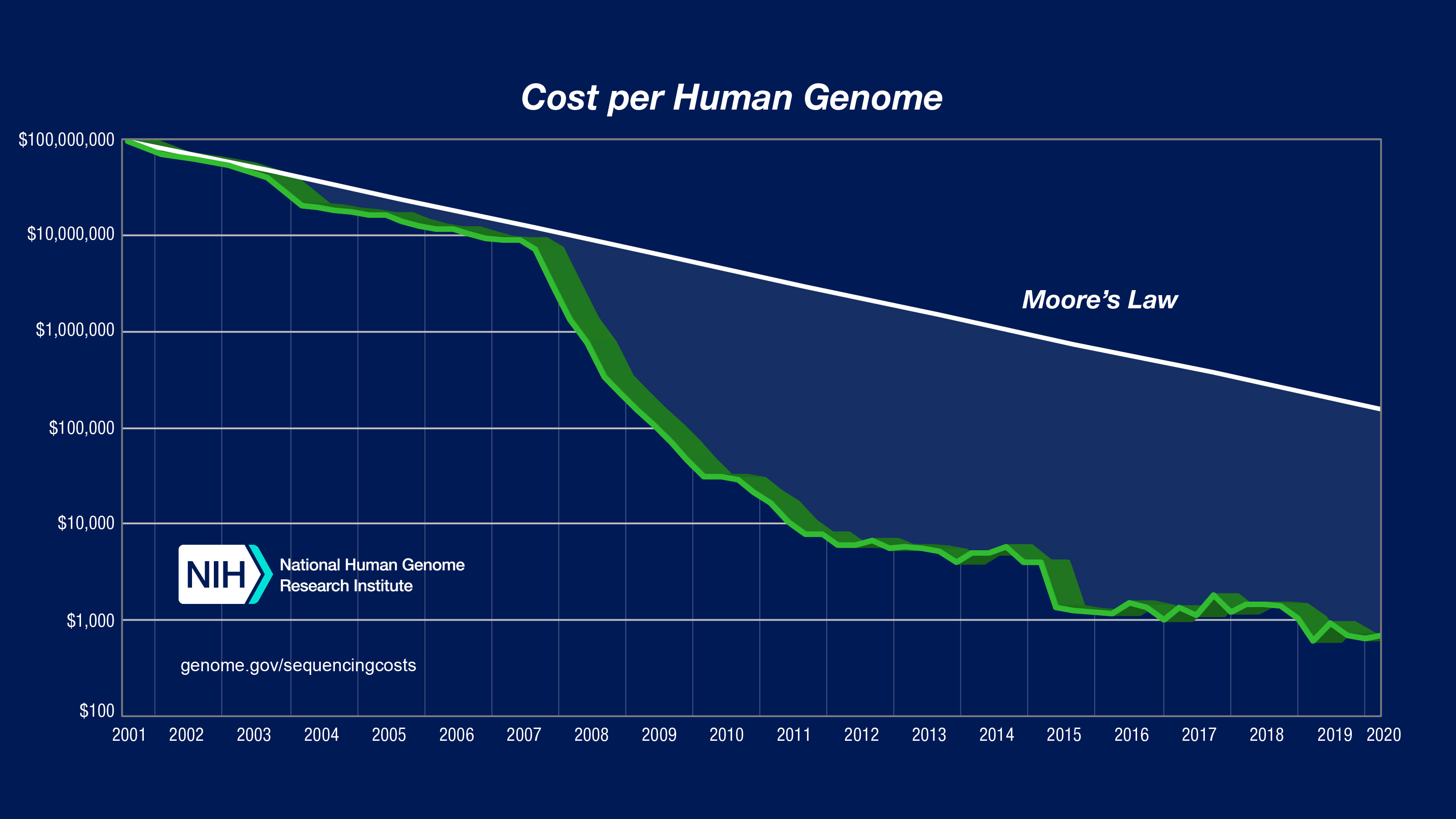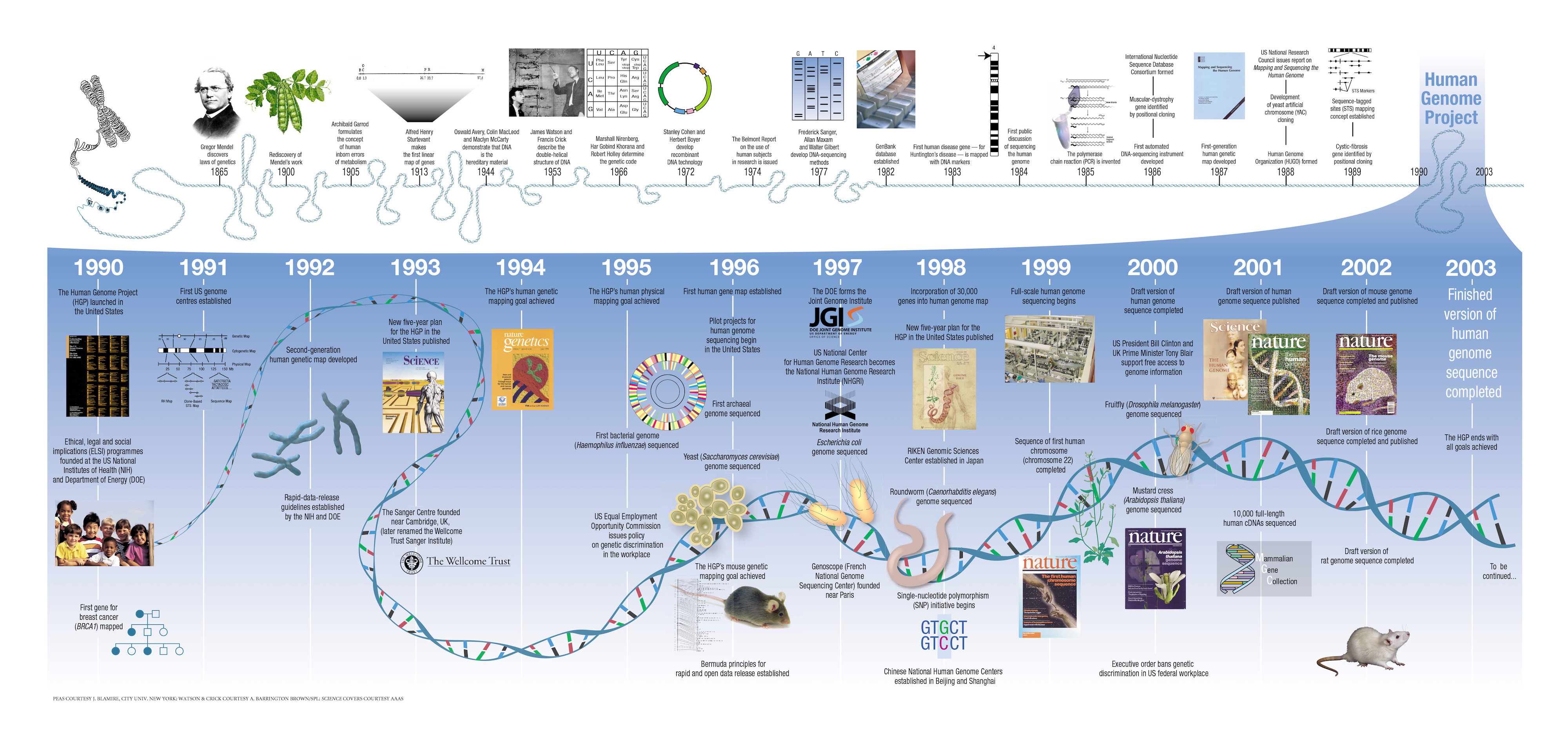The Human Genome Project turns the big 3-0!
Date: 10/08/2020
The Human Genome Project turns the big 3-0!
Author Prabarna Ganguly, Ph.D.
National Human Genome Research Institute
NEWS SEPTEMBER 30, 2020
Celebrating 30 years of genomics that has transformed our understanding of life and improved health.
In 1986, geneticist Thomas Roderick, Ph.D., sat with about 10 colleagues in a bar in Bethesda, Maryland, discussing all-things biology. After a few rounds of drinks, Roderick is said to have thrown out a new term for the study and comparison of genomes across species: "genomics." The term then appeared in scientific literature for the first time a year later.
Genomics — now a household word — was greatly elevated in stature in October 1990 with the worldwide launch of the Human Genome Project. This month marks the 30th anniversary of the endeavor, biology's audacious odyssey that deciphered the first sequence of the 3 billion DNA letters making up the human genetic blueprint — the human genome.
The project showed that humans have 99.9% identical genomes, and it set the stage for developing a catalog of human genes and beginning to understand the complex choreography involved in gene expression. The growing knowledge about the structure and function of the human genome is now regularly used in biotechnology and medicine.
"The Human Genome Project transformed the way we study our biology and medicine. From accessing a genome sequence at the click of a mouse, performing newborn genome sequencing in an intensive care unit or the group's revolutionary decision to share the data with all, the Project's intentions and goals have spilled into how we do science today," said Francis Collins, M.D., Ph.D., National Institutes of Health director.
From accessing a genome sequence at the click of a mouse, performing newborn genome sequencing in an intensive care unit or the group's revolutionary decision to share the data with all, the Project's intentions and goals have spilled into how we do science today.
Thirty years after this historic launch, the field of genomics continues to expand significantly, building upon the Human Genome Project's successes.
Generating the first human genome sequence required actively sequencing human DNA for 6-8 years; today, scientists can sequence a human genome in a day. Such fast human genome sequencing allows physicians to make quick diagnoses of rare genetic disorders in acute settings.
Another notable achievement since the end of the Human Genome Project is the reduced cost of sequencing a human genome. That price has dropped from a billion dollars to mere hundreds, thanks to federal investments used to develop new technologies for DNA sequencing.

"This 30-year milestone is not only an opportunity to reflect on past accomplishments, but a time to look ahead," said Eric Green, M.D., Ph.D., director of the National Human Genome Research Institute (NHGRI). "Over the last 30 years, NHGRI has regularly partnered with the research community to create strategic visions for each phase of human genomics. To commemorate the Human Genome Project's launch 30 years ago, we chose this month to publish NHGRI's new vision for human genomics, a product of the last two-plus years of strategic planning.”
To commemorate the Human Genome Project's launch 30 years ago, we chose this month to publish NHGRI's new vision for human genomics, a product of the last two-plus years of strategic planning.
NHGRI has published two strategic visions since the end of the Human Genome Project, in 2003 and 2011. NHGRI will unveil its 2020 Strategic Vision in late October.
Visit genome.gov/2020SV to learn more.
HGP Timeline Illustration: Landmarks in genetics and genomics
Hover or swipe over the illustration to zoom.


The Human Genome Project (HGP) Timeline contains major milestones in genomics from 1865 to 2003. Credit: Darryl Leja, NHGRI.




